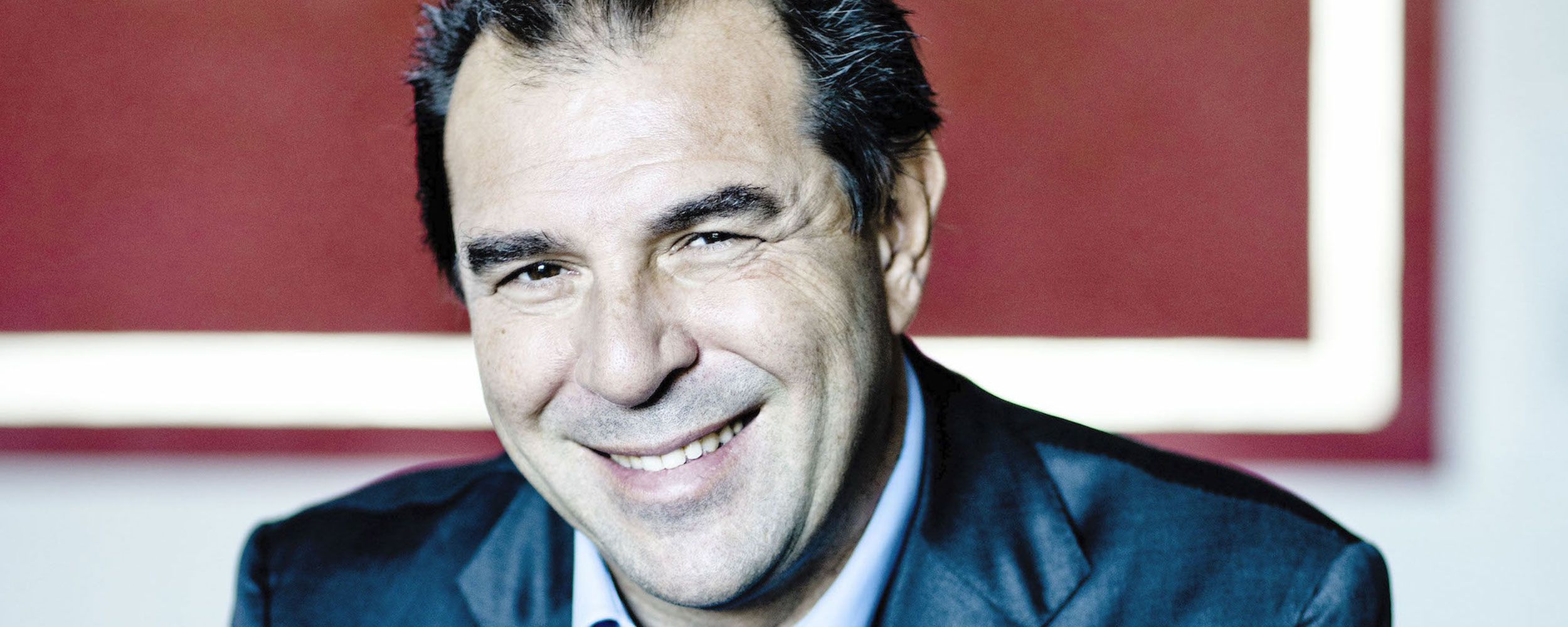Daniele Gatti and the Maggio Musicale Fiorentino Orchestra: January 20 and 21, 2024

For the start of the Maggio Winter Season, on Saturday 20th and Sunday 21st, January 2024, at 8 pm, the main conductor Daniele Gatti on the podium of the Mehta Hall leading the Maggio Musicale Fiorentino Orchestra.
Music pieces by Arnold Schönberg, Richard Strauss and Richard Wagner are on the bill.
The concert will be broadcast deferred on Rai Radio 3
Florence, January 17th, 2024 – Maestro Daniele Gatti, main conductor of the Maggio, on the podium of the Zubin Mehta Hall for the first symphonic concert of the Winter Season. On the lecterns of the Maggio Musicale Fiorentino Orchestra - on 20th (subscription) and 21st January (non-subscription) at 8pm - a program that sees the performance of some of the best-known compositions of the second half of the 19th century which reflect in an exemplary manner the musical climate of the last years of the 19th century and the beginning of the 20th century with the progressive abandonment of romantic and late romantic poetics and the opening towards new aesthetic dimensions that will lead to the subsequent developments of twentieth-century music.
The concert begins by proposing Verklärte Nacht (Transfigured Night) by Arnold Schönberg, composed in 1899 and inspired by the poem of the same name by Richard Dehmel; follows Tod und Verklärung (Death and Transfiguration), a short poem for large orchestra by Richard Strauss, dedicated to his friend Friedrich Rosch. Closing the evening were two musical pieces by Richard Wagner, both taken from his Tristan und Isolde: Vorspiel und Liebestod, i.e. the prelude and death of Isolde.
Opening Verklärte Nacht: it was Schönberg's first significant composition and was inspired by a poem by Richard Dehmel, considered at the time, especially by the composer himself "[...] one of the main representatives of the spirit of the time in poetry": the text narrates the story of a woman who confesses to her lover that she has conceived a child with another man, while the terror of losing her lover assails her. But the man declares himself ready to love the child as if it were his own; the text, however, is not rendered in the composition through singing but is instead rendered as a true symphonic poem, born as chamber music and without the majestic resources of the great orchestra of the romantic period.
Then follows one of Richard Strauss's best-known compositions, Tod und Verklärung: the symphonic poem speaks of the last night of an artist, on the point of death, who waits in memory of the great parts of his life; As he approaches the end, man realizes that the ideals for which he has lived and fought will find true form and meaning only when his soul finds rest. As written by Strauss himself in an 1894 letter addressed to his friend Friedrich von Hausegger: "Six years ago the idea came to me to represent musically in a symphonic poem the moments preceding the death of a man, whose life was was a continuous striving for supreme ideals: such a man is the artist par excellence”; this concept is condensed in the poem by Alexander Ritter, a friend of the composer, which accompanies the score.
The evening closes with Vorspiel und Liebestod (Prelude and Death of Isolde), an extract from one of Wagner's greatest masterpieces, Tristan und Isolde: these two pages - which condense the meaning of the entire work - also summarize its harmonic tensions and they were 'joined' together by Wagner himself.
Two pieces that perfectly manage to outline the characteristics of the work, which the genius from Leipzig wrote inspired by another masterpiece, namely The World as Will and Representation by Arthur Schopenhauer, where the philosopher supported the irrationality of reality and the illusory nature of the world around us which exists only as a projection of our mind: Wagner therefore wanted an opera that told of an idealized and transfigured love, to the point of being able to be realized only in "non-being", in death, in a poignant and supra-temporal way , like a desire for annihilation.
The concert:
Arnold Schoenberg
Verklärte Nacht
Verklärte Nacht (Transfigured Night) was Arnold Schönberg's first major instrumental composition. Inspired by the poem of the same name by Richard Dehmel, a symbolist poet who was particularly popular among German musicians at the beginning of the twentieth century, it was composed in 1899 for string sextet and only later, in 1917, was it transcribed by the author for orchestra arches. Following in the wake of Liszt and Richard Strauss, champions in the symphonic poem genre, Schönberg wanted to develop the idea of program music in the chamber music context. The original choice of the string-only sextet was well suited to translating the content of Dehmel's poetry with melancholic, collected and nocturnal sounds. Divided into five moments, the poem portrays a man and a woman walking at night in a bare forest illuminated only by the pale rays of the moon. The woman hides a secret: she is carrying a child conceived with another man in her womb and while she confesses her guilt, the terror of losing her lover assails her. But the man, with noble words, declares himself ready to love her child as if it were his own. Love, in harmony with nature, will transfigure the child making him the child of both. The page is characterized by some motifs treated as fixed ideas that Schönberg subjects to continuous elaboration. Increasingly pressing chromatic melodies alternate with sudden and mysterious moments of waiting, until the final expressive culmination which seals the union of the two souls held in an embrace.
Richard Strauss
Tod und Verklärung
Richard Strauss's third symphonic poem, Tod und Verklärung was composed between 1888 and 1889. On that occasion Strauss was not inspired by a literary text but described the ideal program of the work in a letter addressed to a friend. The composer confided that he wanted to represent in a symphonic poem the last moments of the life of "a man who had aspired to the highest ideal goals, therefore of an artist". Later it was his friend the composer Alexander Ritter who gave literary form to Strauss' thought by creating a poem which was published together with the score on the occasion of the first performances conducted by the composer in Eisenach in 1890 and in Weimar the following year. The moments of agony that precede the man's death are well summarized by the sinister and irregular rhythm of the initial section. The path that leads from the mortal condition to the solemn final transfiguration is littered with memories, passions and dreams translated into particularly significant symbols and musical gestures. There are flashbacks of his youth lived with feverish excitement, heroic outbursts that lead to the exposition of the theme of the ideal, the focal point of the score. The reappearance of the pulsating rhythm of the triplets combined with the funereal strokes of the percussion puts an end to the artist's mortal existence, but immediately afterwards the dark atmosphere dissolves; a revival of the theme of the ideal emerges which makes its way in the luminous and assertive key of C major in the moment of transfiguration.
Richard Wagner
From Tristan und Isolde: Vorspiel und Liebestod
Richard Wagner completed the writing of Tristan und Isolde in 1859. Starting from the following year, on the occasion of a series of concerts, he decided to combine in a single symphonic page the two instrumental pieces at the beginning and end of the opera, respectively Vorspiel und Liebestod. These are the two most emblematic moments of the drama which represent its deepest meaning. All the elements that characterize the work are concentrated in the Prelude and give voice to the dramatic and all-encompassing passion of love of the protagonists: the harmonic restlessness with the continuous chromatisms that envelop one after the other, the incessant crescendos, the tension of infinite melody. The conflict between Love and Death can only be resolved in the final transfiguration of Isolde who dies on the lifeless body of her beloved with the transition to a different and higher form. Under the weight of an exasperated chromaticism, her final song, similar to an ecstatic delirium, stops at the moment of the glorious and triumphant transfiguration, signed by a cadence in a major key.



